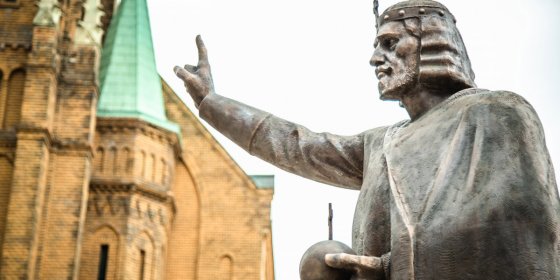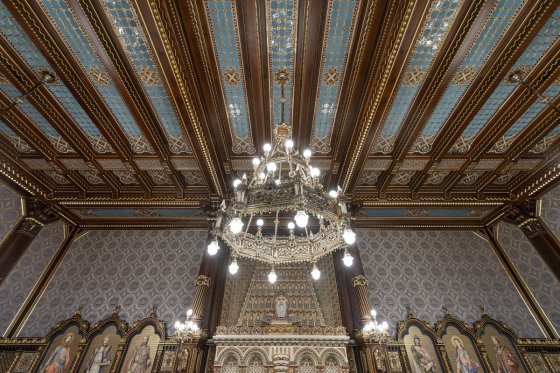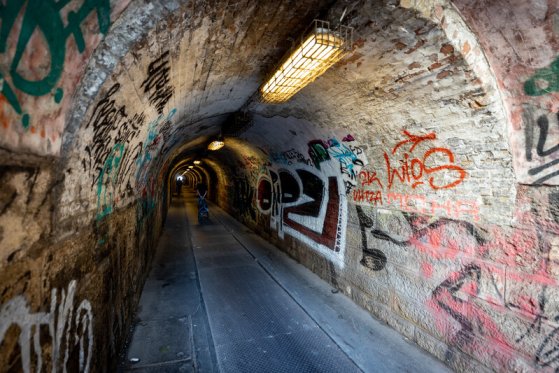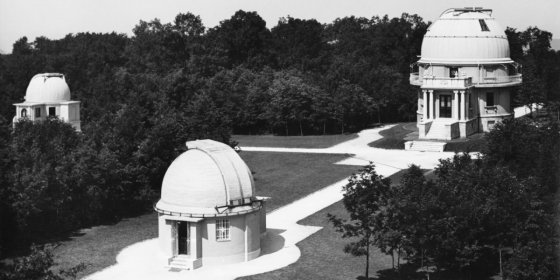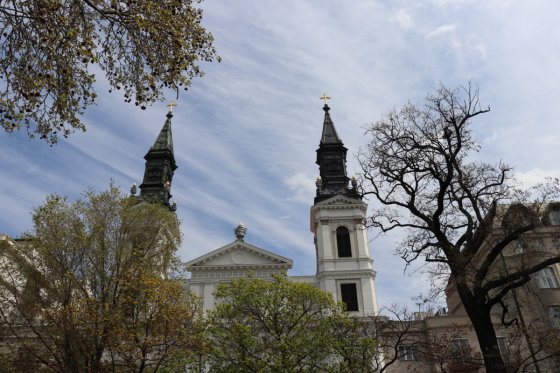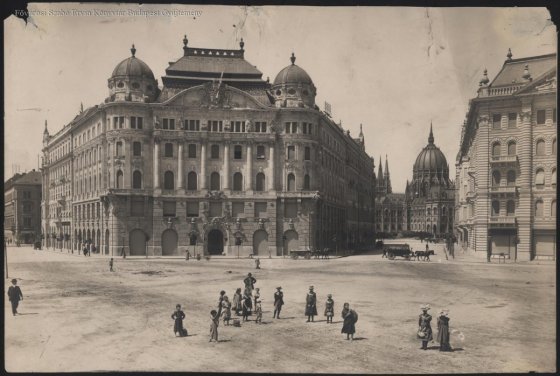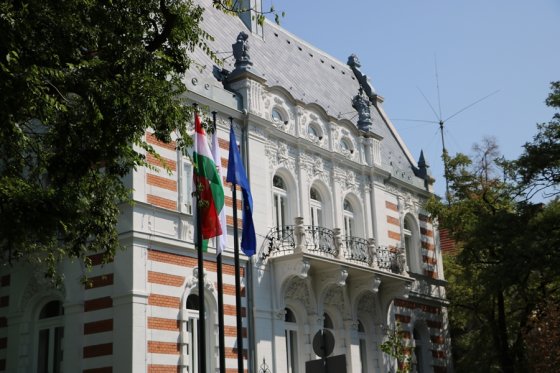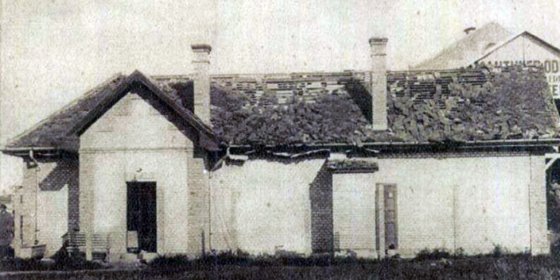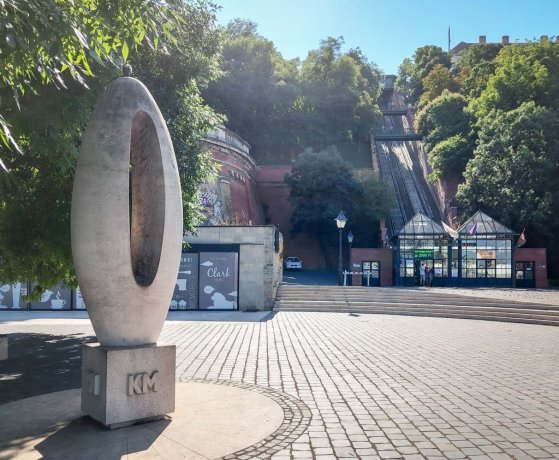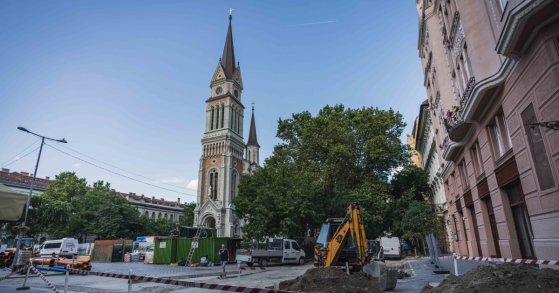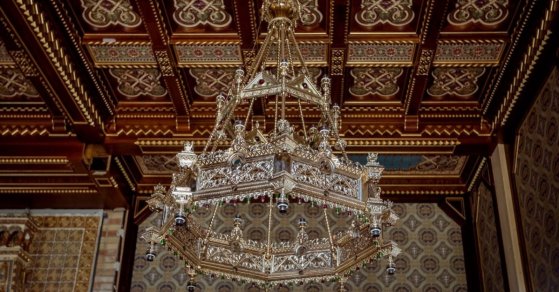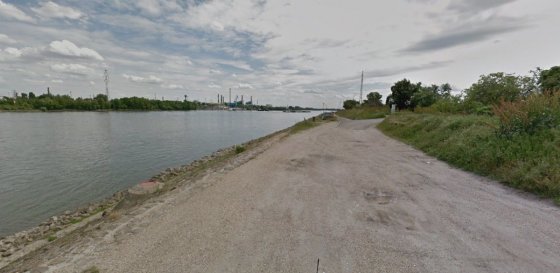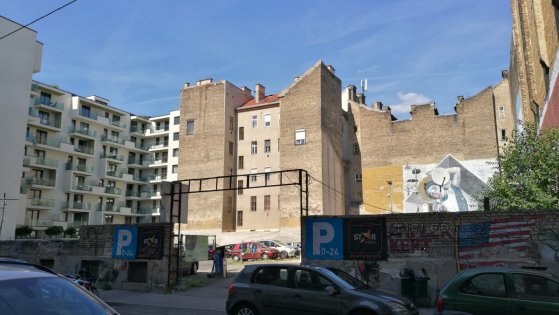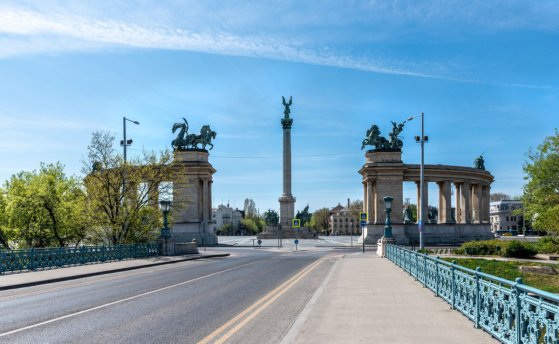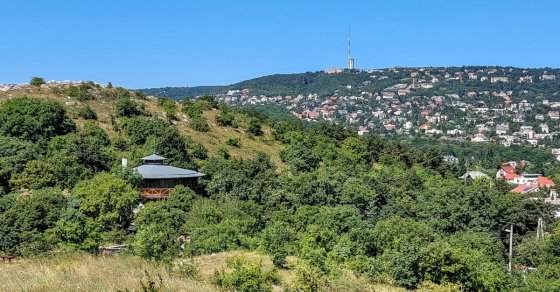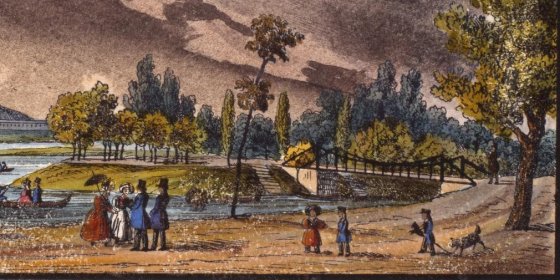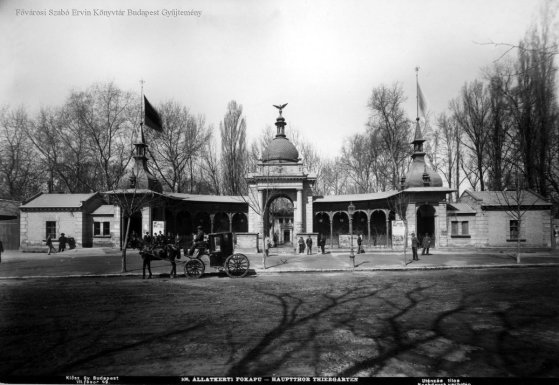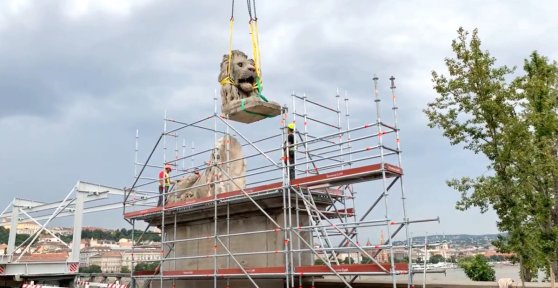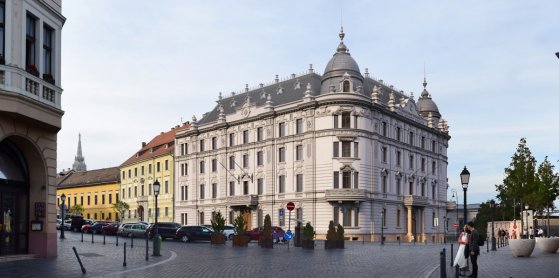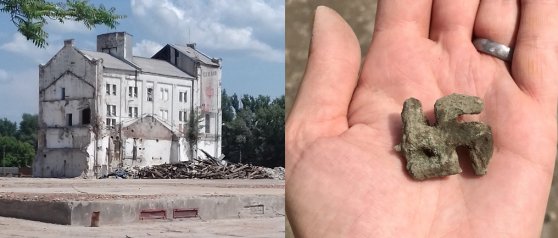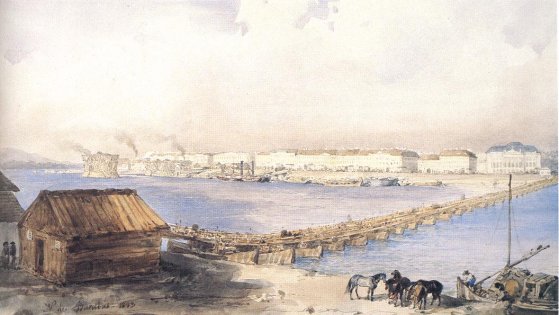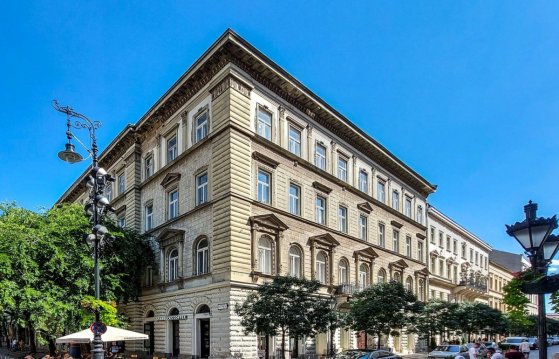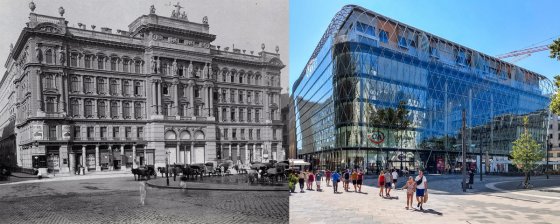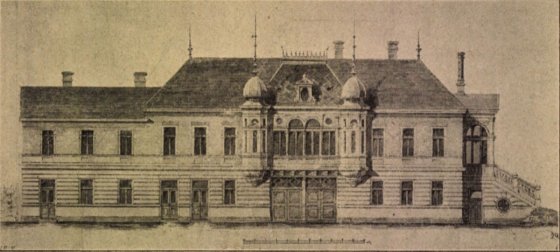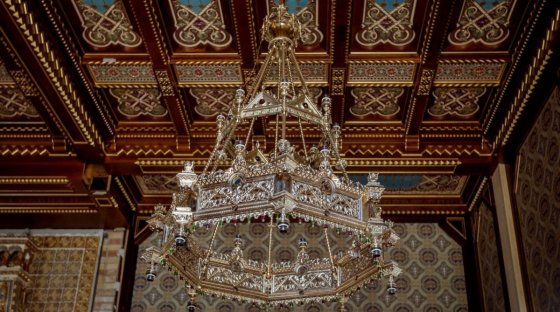 The „intertwined history” of the bridges and the city of Budapest
Which ideas and events have shaped the fate of bridges of Budapest and the cityscape? Alongside many other interesting facts, this question is also answered this newly published book by the Budapest City Archives, which introduces the history of bridges in Budapest.
The „intertwined history” of the bridges and the city of Budapest
Which ideas and events have shaped the fate of bridges of Budapest and the cityscape? Alongside many other interesting facts, this question is also answered this newly published book by the Budapest City Archives, which introduces the history of bridges in Budapest.
pestbuda.hu
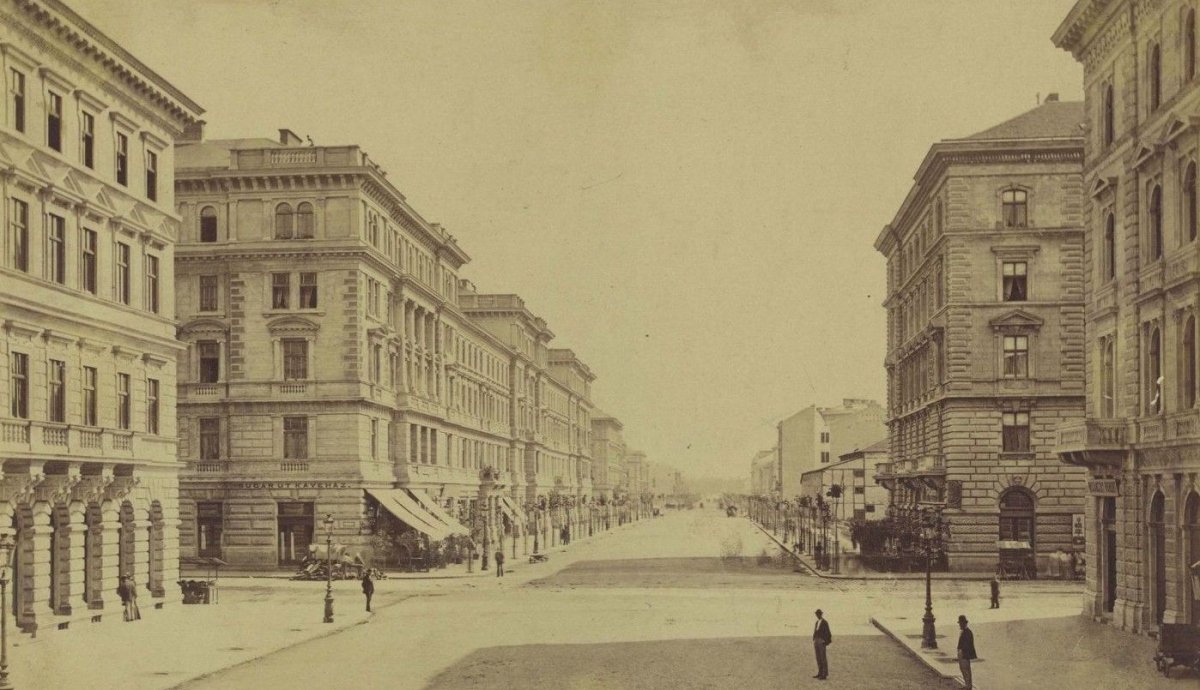 Inspired by the boulevards of Paris - in 1876 the present-day Andrássy Avenue was handed over
Inspired by the boulevards of Paris - in 1876 the present-day Andrássy Avenue was handed over
August 21, 2021 at 10:00 AM
The traffic between the inner city of Pest and the Városliget went through Király Street for a very long time. The narrow street was very crowded, as not only the normal traffic passed through here, but also those who wanted to go to the Városliget for a little refreshment. The Avenue [Sugárút in Hungarian], officially handed over 145 years ago, in 1876, today's Andrássy Avenue, along which lavish palaces were built in place of the one-storey houses, was made to aid this situation.
There was no place for it in the St. Stephen's Park - the statue of our founding king was erected in Kispest
August 19, 2021 at 6:30 PM
The work was originally intended to replace the statue of György Lukács in Szent István Park, but the Capital decided otherwise, so the 2.5-metre-high bronze statue of our founding king ended up not in the park named after him, but in the Templom Square of the 19th District.
The reborn St. Stephen's Hall of the Buda Castle was solemnly handed over
August 18, 2021 at 1:30 PM
The St. Stephen's Hall of the Buda Palace, which was once one of the most ornate rooms in the palace, was renovated with complete historical fidelity. The room, rebuilt in its original form, will be open to the public free of charge from 20 August until the end of the month, following today's official handover.
Budapest's oldest and most neglected pedestrian tunnel is finally being renovated
August 17, 2021 at 4:30 PM
The pedestrian underpass built in 1874 connecting Bajza Street in the 6th District with Bulcsú Street in the 13th District, which runs from the Nyugati railway station, has been in extremely poor condition for decades, and is also dirty and dangerous. However, the underpass, almost the same age as the capital, is now being renovated, so it will be closed to traffic on 23 August and will only reopen in the autumn.
The sky over Budapest - the observatory was moved to Svábhegy because of Trianon
August 16, 2021 at 9:00 AM
The construction of the new Budapest Observatory began on Svábhegy a hundred years ago, which replaced the Ógyalla observatory lost with Trianon. Despite the initial difficulties, a European-level research center was set up in a few years near Normafa, where the skies of Budapest are still being viewed in the observatory's typical domed building.
One tower or two? - The largest Orthodox church in Hungary was consecrated 220 years ago
August 15, 2021 at 7:30 PM
The tower of a church always has a special significance. It is an important part of the cityscape, it helps with orientation and of course a signal to the community as well. The tower (or towers) of the Greek Orthodox Church of Our Lady in Petőfi Square not only define the cityscape, but they are also signals in the history of the 220-year-old church.
The Adria Palace in the storm of history
August 15, 2021 at 3:00 PM
The book titled Hazának használj! Az Adria-palota története [Help the Homeland! The History of the Adria Palace] was recently published, which not only presents the history of the nearly 120-year-old building in Szabadság Square, which is currently under renovation, but also provides an insight into the lives of the former owners and celebrities who lived here.
The hospital specialist architect - Vilmos Freund was born 175 years ago
August 15, 2021 at 10:00 AM
The architectural versatility of Vilmos Freund, born 175 years ago, is characterized by the fact that in addition to the magnificent tenement houses and villas of Andrássy Avenue, office and sacred buildings, as well as several hospital buildings, are associated with his name. That is why he is also referred to as a hospital specialist. It is interesting to know that the literature knows only one of his work that was not built in the capital: the palace of the Adria Hungarian Shipping Company in Rijeka.
A part of the city has become uninhabitable - We still do not know who blew up the Csepel munitions depot 95 years ago
August 14, 2021 at 9:30 AM
A large-scale explosion shook Csepel and the southern part of Budapest on 12 August 1926, at quarter to seven p.m. The disaster 95 years ago caused severe damage to houses in Csepel and Budafok: it broke the window panes, swept the tiles off the roofs. Fortunately, the explosion did not claim human lives, the blaze and sound of which could be seen and heard throughout Budapest.
Miklós Borsos, who made the Zero Kilometre Stone, was born 115 years ago
August 13, 2021 at 9:00 AM
Miklós Borsos, who was recognised as a sculptor, medalist and graphic artist, was born on 13 August 1906, in Nagyszeben (today's Sibiu, Romania), Transylvania, 115 years ago. He lived in Győr, and then in Budapest from 1945. In winter, he worked in the Castle District, at 6 Úri Street, and in summer, in Tihany; his permanent museum can be visited in Győr. Several of his works can be seen in Budapest, and a few of his works involuntarily attracts attention.
What will Bakáts Square look like?
August 12, 2021 at 4:00 PM
The renovation of Bakáts Square in Ferencváros has been on the agenda for a long time, so we are very curious to see what this cozy area, surrounded by old trees, will look like. According to the district local government, there is no need to wait long for an answer, because the works will be completed by December. The green spaces, pavements and street furniture will be renewed, strengthening the city park function of the square. However, parking will be restricted, car traffic will only be allowed on the longer sides of the square.
The world-famous chandeliers of the Kissling Factory - The former ornate luminaires were re-created for St. Stephen's Hall
August 12, 2021 at 11:00 AM
Among the outstanding applied arts companies of the age of dualism, Rudolf Kissling and his son played a significant role with their chandelier and bronze cast factory. Thanks to their artistic work, many of the public buildings built in this era were decorated with their chandeliers and other bronze objects. The original chandeliers of the St. Stephen's Hall in Buda Castle were also made by the Kissling Factory, and the works of applied art were re-created after a long research work.
The local council is planning a community space next to the Árasztó Road dam
August 11, 2021 at 8:00 PM
The Danube Bank area on Árasztó Road in the 11th District would temporarily function as a new public space from the end of August. The local council and the City and River Association (Város és Folyó Egyesület - Valyo) would set up picnic tables and sunbeds to promote the shoreline, the Újbuda district newspaper reported.
Hotel to be built on Kertész Street vacant lot
August 11, 2021 at 9:30 AM
The 19th-century residential houses in the 7th District, 21 and 23 Kertész Street were sold in 2004 by the management of the 7th District in a case known as the Erzsébetváros real estate panama. Both buildings were demolished. Apartments were designed in their place, but the idea did not materialise. Now it turns out that a 254-room hotel is being built on the plot that has been empty for 15 years and has been operating as a car park.
Parking garages are being built on Mexican Road for the car-free City Park
August 10, 2021 at 7:00 PM
The creation of the car-free City Park will be facilitated by the P + R car parks to be built at the Mexican Road terminal of Kisföldalatti, the design contract of which was signed today by the Budapest Development Centre and the winner of the tender, Középülettervező Zrt. The creation of parking garages is integral to the renewal of transport in the area.
Sas Hill: a place surrounded by urban legends
August 10, 2021 at 9:30 AM
Hikers of Sas Hill ('Eagle Hill') in Budapest are in a very privileged position, as the area had been closed to the public for decades. Today, after prior registration, anyone can visit the hill that rises above the BAH junction. If someone walks around with professional guidance, it is safe to say that they will have an outstanding experience: a unique panorama and real plant rarities await them.
They wanted to call the first suspension bridge in Pest the István Bridge, eventually it was called Dróthíd (Wire Bridge)
August 9, 2021 at 3:00 PM
Wire bridge. It’s a strange name, though that’s how the little bridge, which was handed over 195 years ago, on 9 August1826, in the Városliget, near today’s George Washington statue, was called. The small footbridge was a new technology at the time, as it was a cable bridge and the first suspension bridge in Pest.
The Pest Zoo opened in the City Park 155 years ago
August 8, 2021 at 11:30 AM
People have always been curious about special, exotic animals: the stuntmen who appeared in Pest-Buda in the 18th century and travelled with an army of animals have always enjoyed great popularity. However, the real zoo had to wait a long time: it opened its doors on 9 August 1866. The beautiful park quickly became popular among the citizens of Pestbuda, where they could see kangaroos, parrots and reindeers. Giraffes did not arrive at the Zoo until 1868, through the intervention of Queen Elisabeth (Empress Elisabeth of Austria).
An almost concealed plane crash in Budapest - the tragedy in Zugló took place 60 years ago
August 6, 2021 at 3:30 PM
A terrible accident happened 60 years ago in Budapest: a plane crashed into a house in Zugló. The causes of the tragedy, which claimed 30 lives, and the official handling of the accident are more than interesting, as the authorities at the time were trying to cover up the case. Today, however, we know the sad story that put an end to the sightseeing flights over the capital for a long time.
The first lion statue was taken off the Chain Bridge
August 5, 2021 at 2:00 PM
During the renovation of the Chain Bridge, the removal of the stone lions at the Pest bridgehead was started. The three-piece sculptures will be removed and restored, with plans to return them to their place at the end of next year. During the renovation, only those parts of the works that originally existed are restored.
The Buda Castle under constructionwas also visited by Maria Theresa, who visited the capital in 1751
August 4, 2021 at 3:00 PM
Although she gave permission to expand the Buda Castle, Maria Theresa visited Pest and Buda only twice. Her first visit took place in August of 1751, the 11th year of his reign, 270 years ago. This was when the diet was held in Bratislava and during that time the royal court spent a few days in Pest and Buda.
Reconstruction of the former Red Cross headquarters begins in Buda Castle
August 4, 2021 at 10:00 AM
During the reconstruction of the building, which was built for the Red Cross Society and then housed the Ministry of Foreign Affairs and was demolished after the Second World War, it will faithfully follow the original corner dome in its outer features. However, the interior of the building will house modern technology. The partial renovation of the neighbouring Batthyány Palace is also being carried out.
An ancient swastika was found on the grounds of Buszesz
August 3, 2021 at 5:00 PM
The excavation work has entered a new stage in the area of the former distillery in Óbuda, the archaeologists of the Budapest History Museum found Roman coins, a crescent-shaped military mounting made of bronze, and a bronze clothespin depicting a swastika.
Life before the Chain Bridge
August 2, 2021 at 9:00 AM
The pontoon bridge between Pest and Buda was built due to the visit of Archduke Albert Casimir and was closed, with a little exaggeration, due to the trip of Count István Széchenyi. The pontoon bridge between the two banks of the Danube was built 255 years ago and was demolished 171 years ago.
The first horse-drawn railway of Pest started 155 years ago
August 1, 2021 at 9:30 AM
On 1 August 1866, the regular services of the city horse-drawn railway started in Pest. The first route led from today's Kálvin Square to Újpest, the journey time was 35 minutes. The new means of transport advocated by Count Sándor Károlyi was successful, and the horse-drawn railway contributed significantly to the development of Újpest. A few years after the handover of the first track, Pest and Buda were almost enmeshed by horse-drawn railway tracks.
The Neo-Renaissance facade hides a classicist interior in Hercegprímás Street, Lipótváros
July 31, 2021 at 10:00 AM
The house, built in 1844 in the classicist style by Hild József, remodelled in the neo-Renaissance style at the beginning of the 20th century, is now one of the most beautiful buildings in the square surrounding St. Stephen's Basilica at 7 Hercegprímás Street. The facade itself is special with the decorations alternating from floor to floor, and the cosy inner courtyard has retained its classicist touches. What overshadows the history of the palace is the history of the former owners.
Pestbuda recalls how much Budapest has changed in 100 years with 6 interesting pairs of pictures
July 30, 2021 at 9:00 AM
It is always exciting to follow the change, especially when it comes to Budapest. Old photos faithfully document what a house, street or square in the capital used to be like. With their help we can recall the former Haas Palace in Gizella Square, marvel at how - in the 1880s and 1890s - barren the Rózsadomb was, and today's Margit Boulevard were more like the streets of a small town. Factories stood on the banks of the Danube in Pest, next to the Parliament building under construction.
Ferenc Novák designed first an electric cogwheel railway and then a hydraulic funicular on Gellért Hill
July 29, 2021 at 2:00 PM
In the last decade of the 19th century, architect Ferenc Novák presented to the public the plan of the Gellért Hill funicular, which was connected with the intention to demolish the Citadel. According to Novák's idea, not only a funicular would have been built on Gellért Hill, but also a lookout, an illuminated statue and the National Pantheon as a millennium monument. The architect would have built first an electric cogwheel railway and then a hydraulic funicular, for which he also received permits. Yet his dream did not come true.
The Saint Emeric Dormitory in Pest not only provided housing but also raised students
July 28, 2021 at 11:30 AM
At the turn of the century, Saint Emeric's Dormitory was established on a private initiative to alleviate the housing problems of Catholic students and college students, which later developed into a national network. The dormitory operated first in Irányi Street and then on Üllői Road. The Saint Emeric Dormitory in Pest finally found a permanent home under 43-45 Ráday Street in Ferencváros. The renowned dorm suffered from the period of the Hungarian Soviet Republic, but its nearly half-century-old history ended with the turn of the post-World War II era. The building still houses a dormitory.
The final touches are being made in the St. Stephen's Hall of the Buda Palace
July 27, 2021 at 2:30 PM
As a result of the years of work of many experts, from 20 August we can admire the St. Stephen's Hall in the Buda Palace in its old light. The years of work are now coming to an end, almost all the former decorative elements have been put in place. Once again, the bust of St. Stephen stands on the world-famous Zsolnay fireplace, the pyrogranite images depicting the kings and saints of the Árpád dynasty have also been placed, and the huge chandeliers and special wall sconces have also been installed. After the opening on 20 August, it will be free to access the St. Stephen's Hall for a few days.
More articles
 The „intertwined history” of the bridges and the city of Budapest
Which ideas and events have shaped the fate of bridges of Budapest and the cityscape? Alongside many other interesting facts, this question is also answered this newly published book by the Budapest City Archives, which introduces the history of bridges in Budapest.
The „intertwined history” of the bridges and the city of Budapest
Which ideas and events have shaped the fate of bridges of Budapest and the cityscape? Alongside many other interesting facts, this question is also answered this newly published book by the Budapest City Archives, which introduces the history of bridges in Budapest.
 The Bridge Report, which brought a turning point in the history of Budapest
A travel report that changed the history of Pest and Buda, as well as Hungary. The little book contributed to the change of half a thousand years of legal customs and the implementation of an investment of unprecedented size and technical quality. This book was The Bridge Report [Hídjelentés in Hungarian].
The Bridge Report, which brought a turning point in the history of Budapest
A travel report that changed the history of Pest and Buda, as well as Hungary. The little book contributed to the change of half a thousand years of legal customs and the implementation of an investment of unprecedented size and technical quality. This book was The Bridge Report [Hídjelentés in Hungarian].
 Drama on the university wall - The heroic monument was planned 95 years ago
In the constant hustle and bustle of the Egyetem Square in Pest, the students may not even notice the monument that decorates the short section of wall between the church and the central building of ELTE. However, it commemorates their predecessors, the heroes who fought for their country in World War I, and those who heroically helped them. The first design of the dramatically collapsing soldier was born in 1928, ninety-five years ago.
Drama on the university wall - The heroic monument was planned 95 years ago
In the constant hustle and bustle of the Egyetem Square in Pest, the students may not even notice the monument that decorates the short section of wall between the church and the central building of ELTE. However, it commemorates their predecessors, the heroes who fought for their country in World War I, and those who heroically helped them. The first design of the dramatically collapsing soldier was born in 1928, ninety-five years ago.

